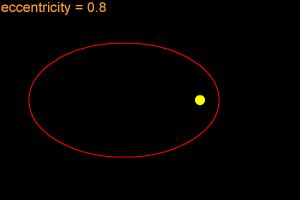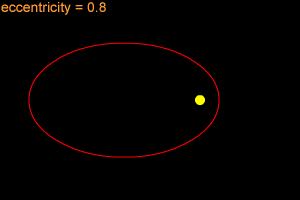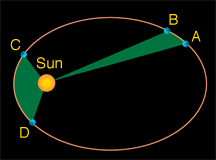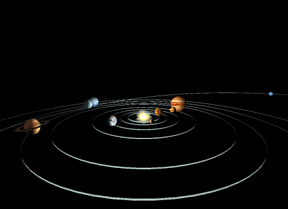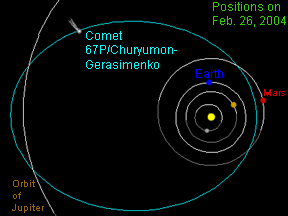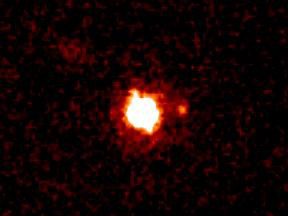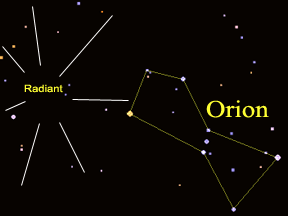Click on image for full size
Original animation by Windows to the Universe staff (Randy Russell).
Elliptical Orbits
You may think that most objects in space that orbit something else move in circles, but that isn't the case. Although some objects follow circular orbits, most orbits are shaped more like "stretched out" circles or ovals. Mathematicians and astronomers call this oval shape an ellipse. All of the planets in our Solar System, many satellites, and most moons move along elliptical orbits.
An ellipse can be very long and thin, or it can be quite round - almost like a circle. Scientists use a special term, "eccentricity", to describe how round or how "stretched out" an ellipse is. If the eccentricity of an ellipse is close to one (like 0.8 or 0.9), the ellipse is long and skinny. If the eccentricity is close to zero, the ellipse is more like a circle.
Earth moves around the Sun in an elliptical orbit. Earth's orbit is almost a perfect circle; its eccentricity is only 0.0167! Pluto has the least circular orbit of any of the planets in our Solar System. Pluto's orbit has an eccentricity of 0.2488.
The Sun isn't quite at the center of a planet's elliptical orbit. An ellipse has a point a little bit away from the center called the "focus". The Sun is at the focus of the ellipse. Because the Sun is at the focus, not the center, of the ellipse, the planet moves closer to and further away from the Sun every orbit. The close point in each orbit is called perihelion. The far away point is called aphelion.
Johannes Kepler, a German astronomer who lived in the early 17th century, discovered some important laws about orbits. Kepler's First Law of Planetary Motion states that planets move in elliptical orbits. His Second Law explains how planets move faster when they are close to the Sun (near perihelion) than when they are far away (near aphelion).
If you want to know more about the mathematics of ellipses, take a look at the advanced version of this page.


